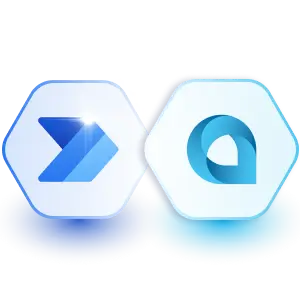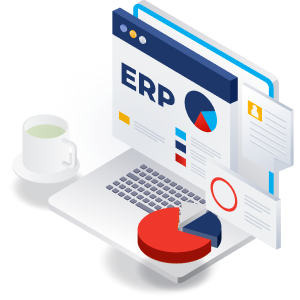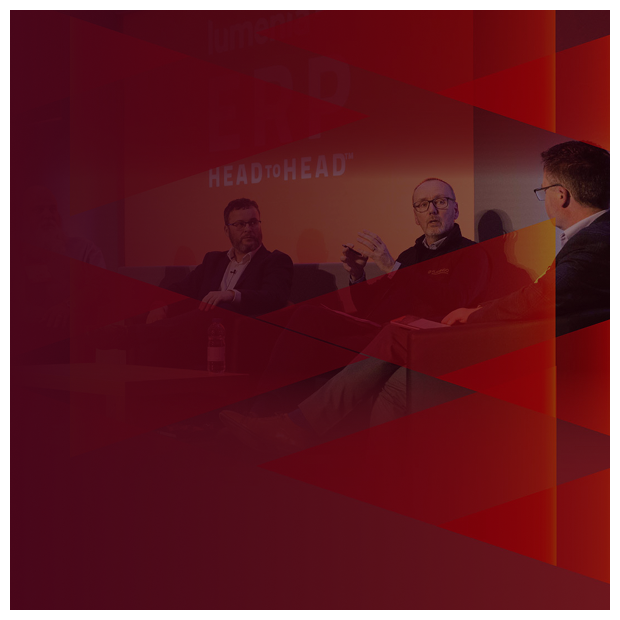The most effective way to understand if an ERP (Enterprise Resource Planning) system is worth investing in is to calculate its ROI (Return on Investment). The value of ERP software is clear: it can streamline operations, improve productivity, and reduce operating costs. However, quantifying these benefits in financial terms is essential to justifying the investment. This article addresses common questions about the financial returns of ERP systems to help you grasp their significance and ensure you maximize the benefits of your new ERP.
Frequently Asked Questions about ERP Financial Returns
Q1: What is ERP ROI?
ERP ROI measures the financial return a company gains from implementing an ERP solution compared to its costs. It considers both the direct financial benefits, such as cost savings and increased revenue and the indirect benefits, like improved efficiency and making informed business decisions.
Q2: Why is calculating the return on investment important?
Calculating ROI is essential because it:
▶️ Demonstrates the value and potential returns of the ERP system to stakeholders.
▶️ Helps select an ERP system by comparing expected ROI from different options.
▶️Tracks the ERP system's performance over time to ensure it meets financial and operational goals.
Q3: How long does it take to see a return from an ERP investment?
The time to see ROI from an ERP investment can vary significantly depending on the system's complexity and your organisation's size. Typically, companies see tangible benefits within 6 to 18 months after implementation.
According to a survey by Panorama Consulting Group, the average ERP system implementation time is about 21 months, but ROI realization often begins earlier as business processes stabilize and efficiencies are gained.
Nucleus Research reports that, on average, companies implementing modern cloud ERP achieved a positive return on ERP investment in just 16 months with a 200% ROI.
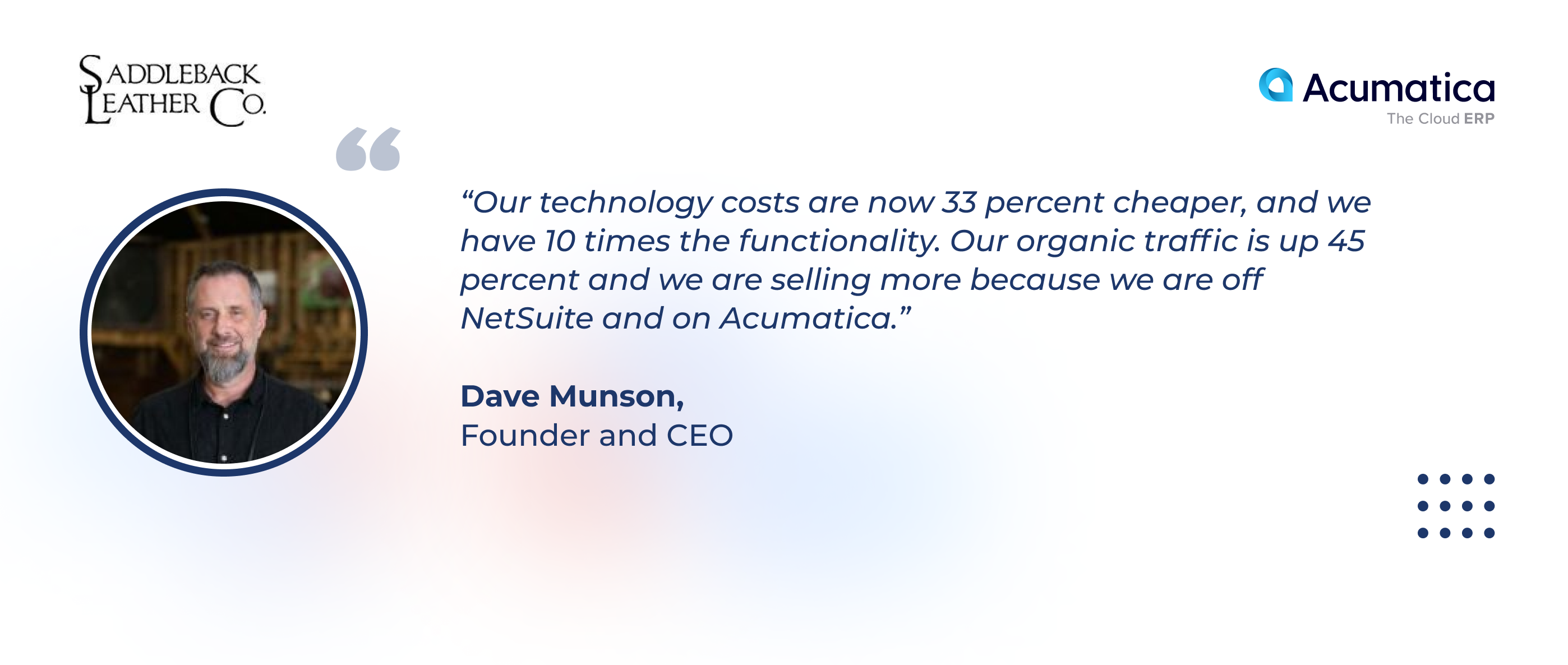
Q4: What factors influence the financial returns of ERP systems?
Several factors influence the monetary benefits of ERP systems, including:
▶️ Implementation Costs: Initial expenses for software, hardware, and consulting services.
▶️ Maintenance Costs: Ongoing maintenance fee, training, and support.
▶️ Process Improvements: Efficiency gains from streamlined processes and reduced manual tasks.
▶️ Scalability: The system's ability to grow with the business, avoiding future costs.
▶️ User Adoption: The extent to which employees effectively use the system.
Q5: How do you evaluate the financial impact of ERP software investment?
Assessing the financial impact involves several steps:
▶️ Identify Costs: Include all direct and indirect expenses, such as software, hardware, training, and downtime.
▶️ Estimate Benefits: Quantify financial gains from increased efficiency, cost savings, and revenue growth.
▶️Apply the ROI Formula: Use the formula (Net Benefits / Total Costs) x 100 to calculate the percentage return. For example, if your ERP system generates $500,000 in benefits and costs $200,000, the return is 150%
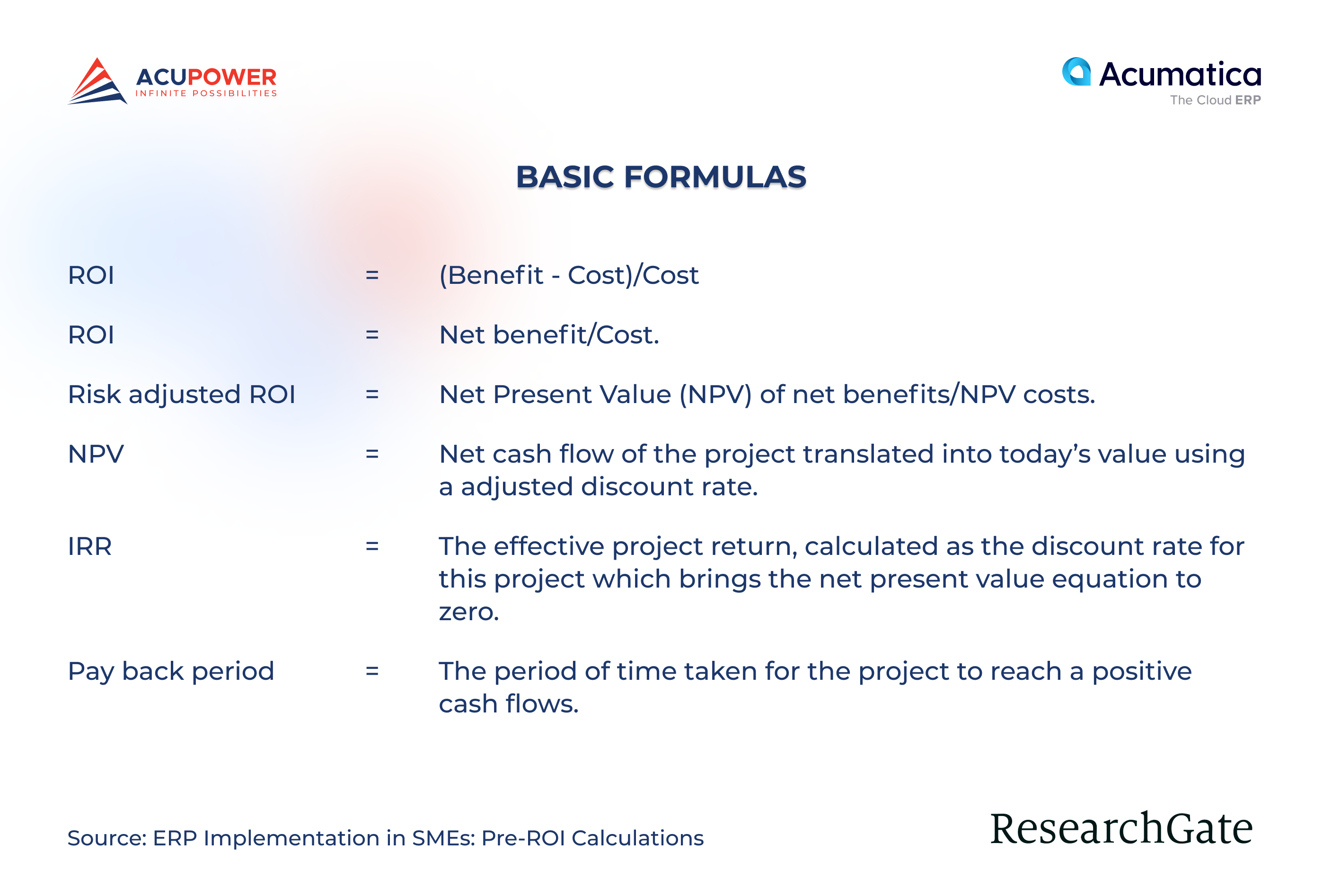
Q6: What is a good ROI for enterprise software?
A good ROI of an ERP implementation typically ranges between 100% to 400% over three to five years. However, this can vary depending on the industry, company size, and specific ERP solutions.
According to Nucleus Research, the average return for every dollar spent on ERP is $7.23, highlighting the significant potential ROI.
Q7: Can ROI be 400%?
Yes, the ROI of implementing an ERP can be 400% or even higher, especially in industries with significant process inefficiencies that an ERP system can address. Achieving such high ROI usually involves thorough planning, choosing the right ERP system, and ensuring a robust implementation process and user adoption.
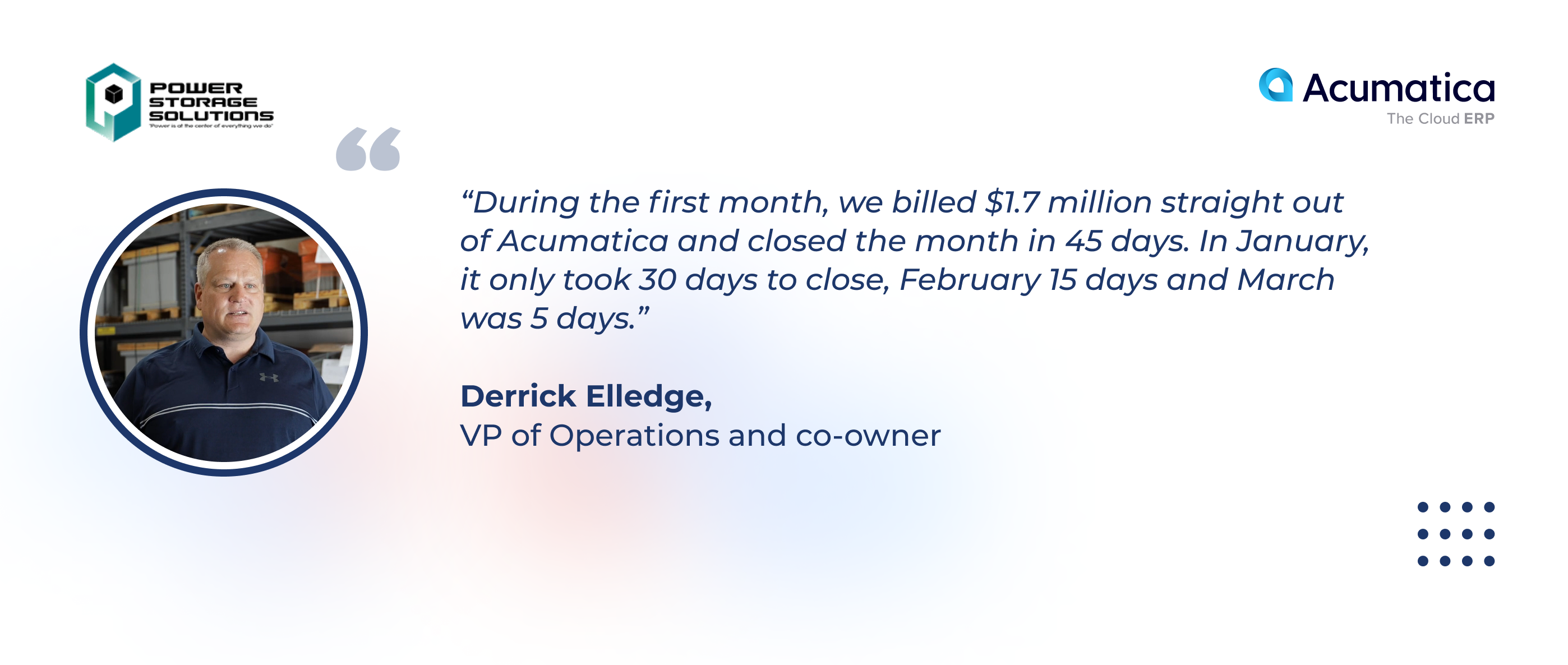
Q8: What is the average ROI for ERP software?
The average ROI for an ERP system varies widely, but many companies report substantial returns. According to a study by Panorama Consulting Group, 83% of organizations consider their ERP implementations successful, meeting their expected benefits. Specifically, 95.1% were satisfied with the improvement in customer experience.

Q9: How do ERP Return on Investment calculators work?
ERP ROI calculations help estimate the cost and potential ROI by considering various inputs, such as implementation costs, operational expenses, and expected benefits. These tools typically provide a detailed breakdown of cost savings, revenue growth, and payback period, making it easier to compare different ERP solutions.
Q10: Which ERP system offers the best ROI?
The ERP system that offers the best ROI depends on your specific business needs, industry, and processes. Some of the top ERP systems known for delivering high ROI include Acumatica, NetSuite, SAP, and Microsoft Dynamics.
BONUS 1: Benefits of the Cloud ERP System (Real-Life Results with Acumatica Cloud ERP)
▶️Efficiency Improvements: Companies like Ray Allen Manufacturing have reported a 25% improvement in call center operations and a 20% increase in distribution efficiency by implementing a modern cloud ERP system, Acumatica.
▶️ Cost Savings: PostcardMania achieved a $600,000 increase in EBITDA profitability within a short period post-implementation.
▶️ Scalability and Growth: AFF|group doubled its business size without doubling staff, thanks to the efficiencies provided by their ERP system.
Bonus 2: Understanding Total Cost of Ownership (TCO)
When considering an ERP solution, it's crucial to evaluate the Total Cost of Ownership (TCO), which encompasses all costs associated with acquiring, implementing, and maintaining the system throughout its lifecycle. TCO includes not only the initial cost but also ongoing expenses such as maintenance, support, and training.
By understanding TCO, businesses can make more informed decisions that align with their financial goals. For a deeper dive into TCO and its implications for your ERP investment, download our comprehensive eBook that provides detailed insights and practical guidance.
Understanding the financial impact of Enterprise Resource Planning systems is vital for making informed decisions about investing in an ERP. This article aims to equip business owners and C-level managers like you with the knowledge needed to evaluate and maximize the ERP benefits. For further insights and personalized advice, consider consulting with an ERP vendor to ensure your implementation delivers the expected returns.
At AcuPower, one of the ERP consultations that we provide is about the ROI of Acumatica Cloud ERP. Reach out to us if you need help understanding if investing in Acumatica is worth it.
Let's Discuss the ROI and TCO of Acumatica For Your Business
Comments (0)
No comments yet
Be the first to comment
 Share on Facebook
Share on Facebook
 Share on LinkedIn
Share on LinkedIn
 Share on Twitter
Share on Twitter



 1912
1912
